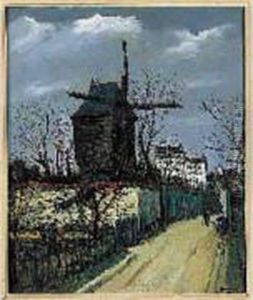Hippolyte A. Moulin Paintings
Hippolyte A. Moulin, born in 1832, was a French sculptor who gained recognition in the 19th century. Although not as widely known as some of his contemporaries, Moulin's work is representative of the artistic movements that flourished during his lifetime, particularly in relation to the Orientalist trend in European art. His sculptures often depicted figures from Eastern mythology and daily life, reflecting the fascination with 'exotic' cultures that was prevalent among European artists and intellectuals of the time.
Moulin studied at the École des Beaux-Arts in Paris under renowned sculptor Francisque Duret. He began exhibiting his work at the Paris Salon, the official art exhibition of the Académie des Beaux-Arts in Paris, in the 1860s. The Salon was the principal showcase for French artists to display their new works and Moulin's sculptures were well received, contributing to his growing reputation.
Throughout his career, Moulin produced a range of sculptures from busts and statuettes to larger figures. He worked with various materials including marble, bronze, and plaster. One of his notable works is the 'Panther Hunt', which depicts the intensity and movement of a hunting scene and showcases Moulin's skill in rendering dynamic human and animal forms.
Despite his skill and the quality of his work, Hippolyte A. Moulin did not achieve the same level of fame as some of his peers like Auguste Rodin. However, his contributions to the field of sculpture, especially within the context of Orientalism, have been appreciated by art historians and collectors. Moulin's works can be found in various museums and private collections, serving as a testament to his artistic legacy.
Hippolyte A. Moulin passed away in 1884, leaving behind a body of work that, while perhaps not extensive, is notable for its representation of the Orientalist aesthetic within French sculpture during the Second Empire and early Third Republic periods.
